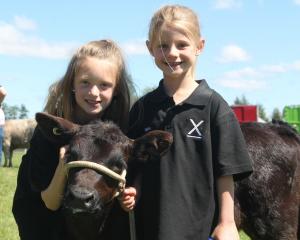
Being in the shearing shed at 6.30am as the yards are filled with sheep and the jug boiled for smoko. That takes New Zealand Merino Company chief executive Angus Street back to his childhood and to home.
For someone who grew up on a mixed farming operation in northern New South Wales, being stuck behind a desk was not always particularly fun.
So, the biggest highlight of his just over two-year tenure with NZM had been getting out on to farms. Working in a business that connected him to the land and allowed him to work with the custodians of that land, who were deeply passionate about their role, filled his cup — even if he was not quite yet acclimatised to the temperatures.
Mr Street, who replaced the company’s inaugural chief executive John Brakenridge, was previously chief executive of AuctionsPlus, the largest agriculture marketplace in Australia. Before that, he held senior roles at Hort Innovation, Meat & Livestock Australia and Bastion Collective.
His tenure so far at NZM had coincided with some "pretty significant headwinds" against all industry. Discretionary expenditure had slowly been declining. Hopefully, it had now bottomed out, he said.
NZM’s supply chain was clogged up with inventory ordered during the boom in demand over the Covid-19 period. That overinflated demand happened for many commodities and fibres.
While NZM was able to maintain contract prices, brands with inventory in the pipeline had to move that through before they could reorder or expand their wool programme.
It also meant brands considering buying ZQ or ZQRX wool had non-accredited wool in the supply chain to move through first, he said.
While headwinds were still there, some exciting "green shoots" were emerging. The supply chain has now emptied, existing brands were reordering again and, in some cases, were placing forward orders for specific micron ranges and types.
There were pockets of consumer demand emerging, including exciting opportunities in China and India. The rising middle class in some Asian countries were beginning to prefer natural fibres the same way European and United States consumers had been, he said.
As there was a shift towards global sustainability, regulations were driving businesses to consider their purchasing, and consumers were shifting to quality over quantity. Governments around the world are taking action to ensure their countries were "not filled with plastic fantastic and cheap knockoffs".
The need for regenerative agriculture and data-backed claims had not gone away, and neither had environmental, social and governance (ESG) principles.
"It’s here to stay and businesses need to find long-term solutions that reduce carbon, improve biodiversity ... wool is beautifully positioned to solve that," he said.
It had been "a game of two halves" over his first two years. The 27 years of effort that had gone into building NZM’s equity in the market had set it up for success during that tough period. And now the tide seemed to be turning in the second half.
A year ago, the auction price was low for both merino and crossbred wool and that was compounded by low meat prices, along with rising cost of production.

There was "absolutely" demand for strong wool. And strong wool that had globally recognised certification attached to it was attracting a premium.
Fifteen years ago, the apparel sector started communicating its need for verified certified wool that was data-backed, audited and had a supply chain that looked at environmental, social and animal welfare requirements. That was when ZQ was born.
Mr Street believed the same was starting to occur now, with signals from the market suggesting a similar trend was likely around home furnishings, interiors and technical textiles.
NZM recognised the price for its strong wool contracts needed to be higher; across the board, prices needed to be higher but there were positive indications from the market that it was willing to pay more for wool that was certified.
Supply of certified strong wool was now a challenge with the change in land use, production systems and a move to shedding sheep.
Farmers needed to look at their land and work out where they could generate the best returns from it.
"If that happens to be trees at the expense of strong wool, that lays down the challenge to us and other wool industry brokers and exporters to get the price of strong wool to the point where you can preference strong wool over trees," he said.
This year, the business is focusing on stabilising and getting back to its core business — wool. The next six to 12 months were about the transformation of the business, investing in product development and market expansion activities and reinforcing operational effectiveness.
NZM was looking at introducing fully-digital traceability so brands could make claims with confidence. It was also doing a significant brand revitalisation programme around building a global brand equity all the way through to end consumers.
During the next five to 10 years, NZM wanted ZQ and ZQRX to be popping up on sewn-in labels and on swing tags, and for ZQ to be the most recognised wool brand in the world in the next decade.
"We want to be the world’s leading wool company. That’s our vision," Mr Street said.
At NZM’s recent meeting, Kate Mitchell was re-elected as an independent director and Paul Ensor was re-elected as a grower-appointed director.
Ms Mitchell also stepped down as chairwoman of the board and was replaced by John Penno.














